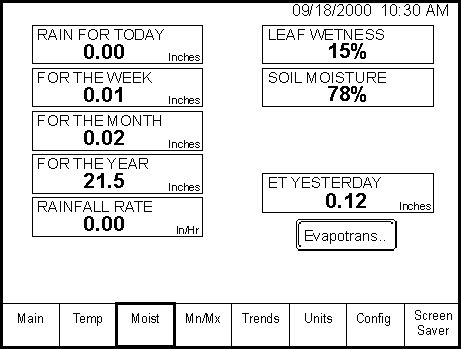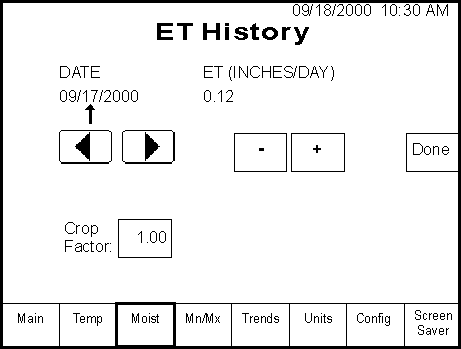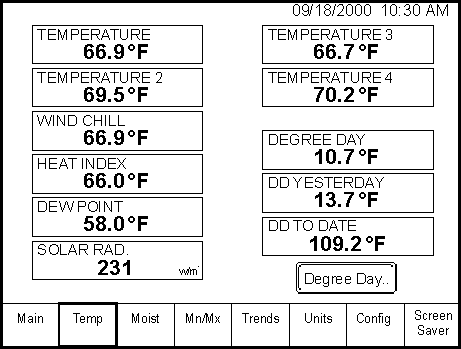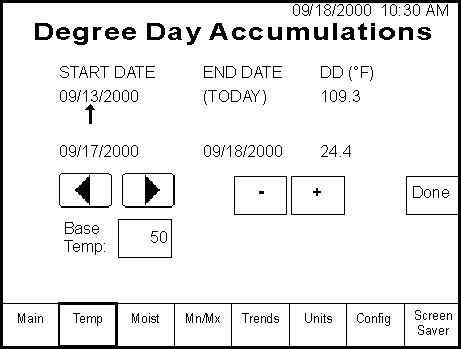|
New Display Adds Ag Features:
The Agricultural edition of the Capricorn 2000 Weather Display is designed to give the user more than just the standard environmental conditions such as temperature, winds speed and humidity. It is designed to calculate complex parameters such as evapotranspiration and degree days to help farm managers make decisions affecting agricultural operations and get the most value from their weather station.
Evapotranspiration calculations are based on the 1982 Kimberly-Penman formulas. These formulas take into consideration factors such as average air temperature, average wind speed, average dew point, solar radiation, station elevation, and the day of the year.
The Weather Display will calculate the ET for the day at midnight and it will display it the next day as "ET Yesterday" in inches per day or mm per day.

In addition the Weather Display will store a year worth of ET values. The user can easily select a desired day to look up ET for that day.

Degree day calculations use a modified simple average degree day formula with a lower threshold temperature (base temperature). The simple average degree day formula is ((TMin + TMax)/2) - TBase. The Weather Display unit uses a slightly modified formula that will give greater accuracy: TAverage - TBase.
The Weather Display unit displays degree day for the day, degree day for yesterday and degree day accumulation. The user can set the starting day for the accumulation and the base temperature.

The user will also be able to look up the degree day accumulation between any two dates in the year. Degree day accumulation is used primarily as a tool for pest and disease modeling and control.

In order to have all the information needed for ET and DD calculations, the Ag Edition Display requires a Capricorn 2000 MP (multi-purpose) weather station with solar radiation sensor. Contact us for upgrade information.
How far can it go?
Extending the Distance Between Control Module and Computer or Display
The standard RS-232 cable length included with the Capricorn Display Console, or for use with a computer, is 7 feet. You can extend the length of cable by ordering additional RS-232 cable to maximum length of 150 feet.
If your application requires greater distance, two options are available. The first option, RS-422 Converter Modules, will extend the range of cable to 4000 feet.
Additionally, Columbia Weather Systems is introducing wireless options for the Capricorn 2000 weather station. They can be used to transmit data from the Capricorn 2000 Control Module to either a Weather Display console or a computer running Weather View 32.
Model 8242 offers a range of 1600 feet (line of sight) with an RF communications rate of 19.2 Kbps.
Model 8243 is a powerful 1 Watt transceiver that transmits data at 56 Kbps over distances of up to 24 miles line of sight.
Proprietary technology offers increased security and minimizes the effects of interference, making these the most reliable and cost-effective radios available.
Additionally, spread spectrum technology allows use of these transceivers without an FCC site license. They are certified for use as unlicensed spread spectrum devices in the United States and Canada.
Each model includes a transceiver, power supply, communication cable and antenna.
Note: The PDF version of the newsletter includes a diagram of wireless and RS-422 communication set ups.
|

